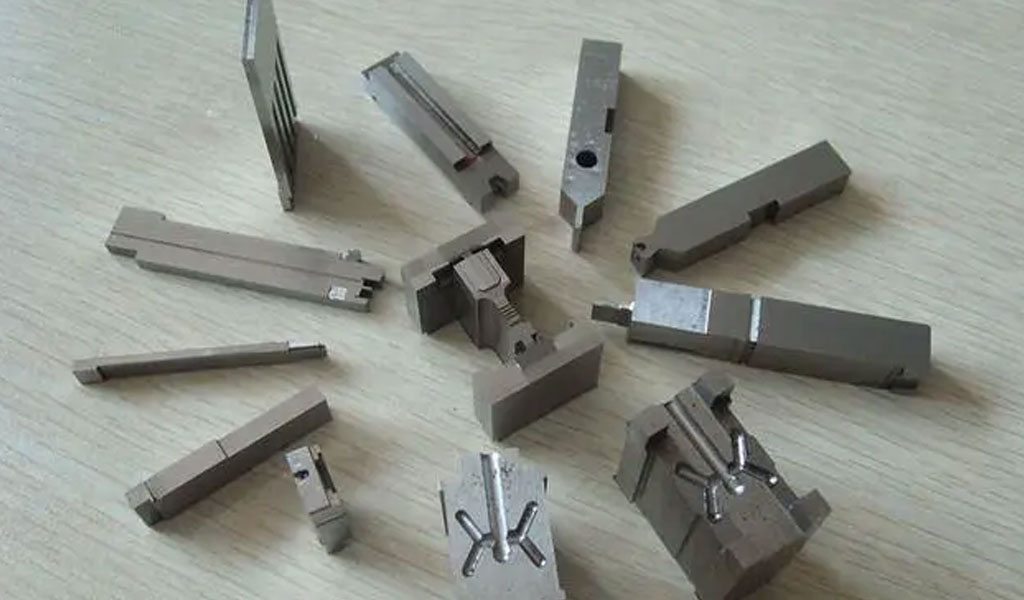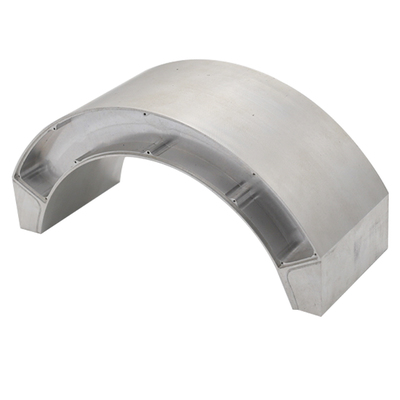Differences Between Wire EDM and Die-Sinking EDM

Electrical Discharge Machining (EDM) is a non-traditional machining process that removes material from a workpiece through a series of rapidly recurring electrical discharges (sparks). EDM is a crucial technology for manufacturing intricate and precise components that are challenging to produce using conventional machining methods. There are two primary types of EDM: Wire EDM (WEDM) and Die-Sinking EDM (also known as Sinker EDM or Ram EDM). Each type has unique characteristics, advantages, and applications. This article explores the fundamental differences between Wire EDM and Die-Sinking EDM, their respective advantages and disadvantages, and their applications in various industries.
1. Overview of EDM Technology
1.1 Principles of EDM
EDM is a process that uses electrical discharges to erode material from a conductive workpiece. The process involves creating an electrical potential between an electrode (tool) and the workpiece, which are immersed in a dielectric fluid. When the potential difference becomes sufficiently high, a spark discharge occurs, generating localized heat that melts and vaporizes a small volume of the workpiece material. The dielectric fluid cools the area and flushes away the eroded particles. This cycle repeats, gradually shaping the workpiece.
1.2 Types of EDM
The two main types of EDM are:
- Wire EDM (WEDM): Uses a thin, continuously moving wire as the electrode to cut contours and complex shapes in the workpiece.
- Die-Sinking EDM (Sinker EDM or Ram EDM): Uses a shaped electrode, typically made of graphite or copper, that is formed to the desired geometry of the cavity to be machined.
2. Wire EDM
2.1 Overview
Wire EDM, also known as wire-cut EDM, uses a thin, electrically conductive wire as the electrode. The wire moves continuously between two spools, and the workpiece is positioned on a CNC-controlled table that moves in multiple axes. The process allows for precise cutting of intricate and complex shapes, making it ideal for producing parts with tight tolerances and fine details.
2.2 Process and Mechanism
The wire, typically made of brass or other conductive materials, is tensioned between upper and lower guides. As the wire moves, electrical discharges occur between the wire and the workpiece, eroding material along the wire's path. The dielectric fluid, usually deionized water, cools the work area and removes debris.
2.3 Advantages of Wire EDM
- Precision and Accuracy: Wire EDM can achieve extremely tight tolerances, often in the micrometer range, making it suitable for high-precision applications.
- Complex Geometry: Capable of cutting complex shapes and intricate details, including internal features and sharp corners.
- Material Versatility: Can machine hard and difficult-to-machine materials, such as hardened steel, titanium, and superalloys.
- Smooth Surface Finish: Provides excellent surface finish, reducing the need for additional finishing operations.
2.4 Disadvantages of Wire EDM
- Slow Material Removal Rate: The process can be slower compared to traditional machining methods, making it less suitable for high-volume production.
- Wire Consumption: Continuous wire usage can result in higher operational costs.
- Size Limitations: Limited by the wire's length and the machine's travel range, restricting the size of the workpiece.
2.5 Applications of Wire EDM
- Tool and Die Making: Manufacturing precision molds, dies, and punches.
- Medical Device Manufacturing: Producing intricate components for medical instruments and implants.
- Aerospace and Defense: Machining high-performance materials for aircraft and defense components.
- Electronics: Fabricating precision parts for electronic devices and connectors.
3. Die-Sinking EDM
3.1 Overview
Die-Sinking EDM, also known as sinker EDM or ram EDM, uses a shaped electrode that is a negative image of the desired cavity or form to be machined. The electrode is typically made from graphite, copper, or tungsten, and is gradually lowered into the workpiece to create the desired shape through a series of electrical discharges.
3.2 Process and Mechanism
The electrode is mounted on a CNC-controlled ram or servo mechanism that allows precise movement. As the electrode approaches the workpiece, electrical discharges occur, eroding the workpiece material. The dielectric fluid, usually hydrocarbon oil or deionized water, cools the electrode and workpiece, and removes eroded particles.
3.3 Advantages of Die-Sinking EDM
- Complex Cavities: Ideal for producing intricate cavities, undercuts, and internal features that are difficult or impossible to machine with other methods.
- Hard Material Machining: Can machine hard and high-strength materials with ease.
- Fine Surface Finish: Capable of achieving fine surface finishes, suitable for mold and die applications.
- Electrode Reusability: Electrodes can be reused for multiple operations, reducing tooling costs.
3.4 Disadvantages of Die-Sinking EDM
- Electrode Wear: The electrode wears down over time, affecting precision and requiring frequent replacement.
- Longer Setup Times: Requires precise electrode fabrication and setup, which can be time-consuming.
- Higher Operational Costs: The process can be more expensive due to electrode fabrication and wear.
- Slower Material Removal Rate: Similar to wire EDM, the material removal rate can be slow, limiting productivity for large volumes.
3.5 Applications of Die-Sinking EDM
- Mold and Die Manufacturing: Producing molds for injection molding, die-casting, and forging.
- Aerospace: Machining complex aerospace components and turbine blades.
- Automotive: Manufacturing intricate parts for engines, transmissions, and fuel systems.
- Medical Devices: Creating detailed and precise components for medical instruments and implants.
4. Comparative Analysis
4.1 Precision and Accuracy
Both Wire EDM and Die-Sinking EDM offer high precision and accuracy, but Wire EDM typically provides better tolerances due to its capability to cut with a thin wire. Die-Sinking EDM is also precise but can be limited by electrode wear and the complexity of electrode fabrication.
4.2 Complexity of Machining
Wire EDM excels in cutting complex and intricate shapes with tight internal features and sharp corners, making it suitable for parts requiring detailed geometries. Die-Sinking EDM is better for creating deep cavities and undercuts that are challenging to achieve with Wire EDM.
4.3 Material Removal Rate
Both methods have relatively slow material removal rates compared to traditional machining methods. However, Wire EDM can be slower due to the continuous wire feed and fine cutting capability. Die-Sinking EDM's removal rate depends on electrode size and shape but can be more efficient for deeper cavities.
4.4 Surface Finish
Wire EDM generally provides a smoother surface finish due to the fine wire and precise control of the cutting process. Die-Sinking EDM can also achieve a fine finish, especially with careful control of discharge parameters and proper electrode material selection.
4.5 Cost and Efficiency
Wire EDM has higher operational costs due to continuous wire consumption and slower material removal rates. Die-Sinking EDM can be more cost-effective for producing multiple identical parts using reusable electrodes, but initial electrode fabrication can be costly and time-consuming.
4.6 Application Suitability
- Wire EDM: Best suited for cutting intricate shapes, thin walls, and fine details in hard materials. Ideal for tool and die making, medical devices, aerospace, and electronics.
- Die-Sinking EDM: Ideal for creating deep cavities, undercuts, and complex internal features in molds, dies, aerospace components, and automotive parts.
5. Conclusion
Wire EDM and Die-Sinking EDM are essential technologies in modern manufacturing, each with unique capabilities and applications. Wire EDM offers unparalleled precision for cutting complex shapes and fine details, making it invaluable for tool and die making, medical device manufacturing, and other high-precision industries. Die-Sinking EDM excels in creating deep cavities and intricate internal features, making it ideal for mold and die manufacturing, aerospace, and automotive applications.
Understanding the differences between these two EDM processes enables manufacturers to choose the most suitable method for their specific needs, optimizing productivity, precision, and cost-efficiency. Both Wire EDM and Die-Sinking EDM continue to evolve with advancements in technology, further expanding their applications and capabilities in various industries.
Reprint Statement: If there are no special instructions, all articles on this site are original. Please indicate the source for reprinting:https://www.cncmachiningptj.com/,thanks!
 3, 4 and 5-axis precision CNC machining services for aluminum machining, beryllium, carbon steel, magnesium, titanium machining, Inconel, platinum, superalloy, acetal, polycarbonate, fiberglass, graphite and wood. Capable of machining parts up to 98 in. turning dia. and +/-0.001 in. straightness tolerance. Processes include milling, turning, drilling, boring, threading, tapping, forming, knurling, counterboring, countersinking, reaming and laser cutting. Secondary services such as assembly, centerless grinding, heat treating, plating and welding. Prototype and low to high volume production offered with maximum 50,000 units. Suitable for fluid power, pneumatics, hydraulics and valve applications. Serves the aerospace, aircraft, military, medical and defense industries.PTJ will strategize with you to provide the most cost-effective services to help you reach your target,Welcome to Contact us ( [email protected] ) directly for your new project.
3, 4 and 5-axis precision CNC machining services for aluminum machining, beryllium, carbon steel, magnesium, titanium machining, Inconel, platinum, superalloy, acetal, polycarbonate, fiberglass, graphite and wood. Capable of machining parts up to 98 in. turning dia. and +/-0.001 in. straightness tolerance. Processes include milling, turning, drilling, boring, threading, tapping, forming, knurling, counterboring, countersinking, reaming and laser cutting. Secondary services such as assembly, centerless grinding, heat treating, plating and welding. Prototype and low to high volume production offered with maximum 50,000 units. Suitable for fluid power, pneumatics, hydraulics and valve applications. Serves the aerospace, aircraft, military, medical and defense industries.PTJ will strategize with you to provide the most cost-effective services to help you reach your target,Welcome to Contact us ( [email protected] ) directly for your new project.

- 5 Axis Machining
- Cnc Milling
- Cnc Turning
- Machining Industries
- Machining Process
- Surface Treatment
- Metal Machining
- Plastic Machining
- Powder Metallurgy Mold
- Die Casting
- Parts Gallery
- Auto Metal Parts
- Machinery Parts
- LED Heatsink
- Building Parts
- Mobile Parts
- Medical Parts
- Electronic Parts
- Tailored Machining
- Bicycle Parts
- Aluminum Machining
- Titanium Machining
- Stainless Steel Machining
- Copper Machining
- Brass Machining
- Super Alloy Machining
- Peek Machining
- UHMW Machining
- Unilate Machining
- PA6 Machining
- PPS Machining
- Teflon Machining
- Inconel Machining
- Tool Steel Machining
- More Material





